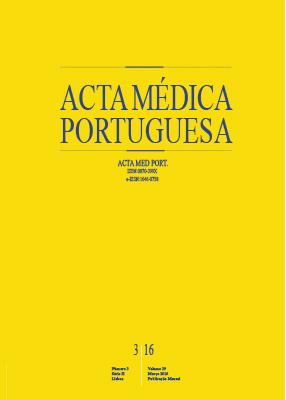Elastosis Perforans Serpiginosa and Wilson Disease: A Rare but Predictable Consequence of Long-term Therapy with D-Penicillamine
DOI:
https://doi.org/10.20344/amp.6749Keywords:
Chelating Agents/therapeutic use, Hepatolenticular Degeneration, Penicillamine, Skin Diseases/chemically induced.Abstract
Elastosis perfurans serpiginosa is a rare perforating dermatosis found primarily in adolescents and young adults, characterized by transepidermal elimination of abnormal elastic fibers. The only drug known capable of inducing elastosis perfurans serpiginosa is D-penicillamine. We report the case of a 52 year-old woman with keratotic papules arranged in an annular pattern with central clearing and centrifugal growth, located in the anterior cervical region. The patient was chronically treated with D-penicillamine for Wilson disease. Lesion biopsy showed transepidermal elimination of thickened, eosinophilic, branched, sawtooth-like elastic fibers. The clinical and pathological findings were consistent with elastosis perfurans serpiginosa secondary to D-penicillamine. It is estimated that elastosis perfurans serpiginosa occurs in 1% of patients treated with D-penicillamine. By blocking directly or indirectly the desmosine cross-links between elastin molecules, D-penicillamine leads to the synthesis of abnormal dermal and extracutaneous elastic fibers. Elastosis perfurans serpiginosa may be the first manifestation of a multisystemic degenerative process of elastic connective tissue.Downloads
Downloads
Published
How to Cite
Issue
Section
License
All the articles published in the AMP are open access and comply with the requirements of funding agencies or academic institutions. The AMP is governed by the terms of the Creative Commons ‘Attribution – Non-Commercial Use - (CC-BY-NC)’ license, regarding the use by third parties.
It is the author’s responsibility to obtain approval for the reproduction of figures, tables, etc. from other publications.
Upon acceptance of an article for publication, the authors will be asked to complete the ICMJE “Copyright Liability and Copyright Sharing Statement “(http://www.actamedicaportuguesa.com/info/AMP-NormasPublicacao.pdf) and the “Declaration of Potential Conflicts of Interest” (http:// www.icmje.org/conflicts-of-interest). An e-mail will be sent to the corresponding author to acknowledge receipt of the manuscript.
After publication, the authors are authorised to make their articles available in repositories of their institutions of origin, as long as they always mention where they were published and according to the Creative Commons license.









